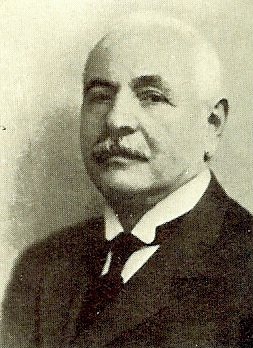Bianchi
|
1885
- 1955 (then Autobianchi) |
Country: |
 |
|
THE AUTOBIANCHI COMPANY once produced over 200,000 cars a year and was Italy's third biggest car manufacturer. But when Autobianchi was at its peak, few would have known about the company's humble beginnings. Bianchi was founded by Edoardo Bianchi, the son of the proprietor of a large grocery firm, who opened his own Milan workshop at the age of twenty, in 1885, and started to manufacture bicycles of English pattern, which were an immediate success.
By 1890, he had acquired an established reputation for his products which were well known for successes in road and track races in Italy and abroad. It was not until 1897 that Edoardo turned his attention to motor cycles and, in the following year, to producing his first four-wheeler. It was based on bicycle techniques, with a steel-tube frame and a single-cylinder,
air-cooled de Dion engine powering the rear wheels. By 1900, the Bianchi works in Milan had grown to a substantial size and were devoted almost entirely to motor-cycle and bicycle production.
Clearly, development work on the original quadri-cycle had continued, because in 1900 a second single-cylinder car was produced, again using the 942 cc de Dion unit driving the rear wheels by chain. At this point, the Bianchi company took a decisive step in the direction of motor car manufacture: an engineer, Giuseppe Merosi, joined the company to develop the motor car side of production. A range of increasingly powerful and fast touring cars was evolved: by 1907 a new factory was producing three chassis types of different wheelbase lengths, all using interchangeable components.
The engines were of the four-cylinder, side-valve type, driving the rear wheels through a four-speed gearbox and a chain. Another personality who was to play a considerable part in the future of the company now joined Edoardo Bianchi-Gian Fernando Tommaselli. The scale of production was increased even further and an ultra- modern plant was built, from which Bianchi cars were produced for the Italian and world markets until World War 1. Despite the fact that at this stage the company had not applied the principles of line production to its output, it had established a reputation for reasonably priced quality, sound construction and good performance.
New for 1908 was the type G, which featured a modern, L-head, mono bloc, four-cylinder engine and, initially, a three-speed gearbox (by 1910 it had acquired a further ratio). An interesting development, for an Italian manufacturer, was the type S of 1914, an inexpensive 1244 cc three-speed car, available in only one body style and one colour. Electrics were an optional extra, but were standard on Bianchi's wartime newcomer the 3.3-litre B-type of 1915.
The S was enlarged to 1460 cc in 1916, but disappeared shortly after World War 1 in favour of the type 12. Vintage Bianchis typified the more conservative strain in Italian design, with little sporting flavour, although they did build a contender for a 2-litre
Grand Prix in 1922. The car had a dohc four-cylinder engine and produced over 90 bhp. Unfortunately the project was shelved. In 1923, a new model, the type 16, was produced to replace the 12, and it featured a detachable
cylinder head.
 Edoardo Bianchi.
Edoardo Bianchi. |
The firm also brought out, at the same time, the 2-litre, pushrod type 18, which was very popular with English coach builders of the period. It was not until 1924, with the arrival of Antonio Santoni to the company as chief engineer, that the company turned to the small car sector of the market, with the S4. Like the larger, 2300 cc, type 20 which was produced at the same time, the S4 retained one distinguishing feature, that of a separate gearbox driven by a short shaft from the clutch and driving the rear wheels via another short shaft.
Santoni's S4, which was Bianchi's answer to the Fiat 509, developed year by year, via the Ss of 1927, until it was replaced, in 1935, by the 1452 cc S9, which remained in production until 1939. It featured a five-bearing crankshaft and, by 1936, had acquired hydraulic
brakes and a
synchromesh gearbox, though, unusually for a cheap Italian car, it rode on beam axles all round and wore Rudge type wire wheels. Also made was a long-wheelbase six/seven-seater version of the S9 which was used as a taxicab.
During World War 2 the Bianchi works were turned over to the production of heavy commercial vehicles, most of them with diesel engines. Towards the end of 1943, the Milan factory was almost completely destroyed by bombing, but production continued in other premises. In 1946, Edoardo Bianchi died, aged 81, his principal collaborator Tommaselli having died a few years earlier. After this, car production ceased, lorries being responsible for the company's survival until 1955 when, with Fiat and Pirelli backing, the company was given a new lease of life under the name of Autobianchi.
Although it may seem rather uncharitable to say so, perhaps the most outstanding achievement of the Bianchi company is that it survived for so long. It could trace its origins back to 1885 and yet in the intervening years, unlike most Italian car manufacturers, had won no racing fame, established no world records and built no epoch-making models. Despite such apparent handicaps the Bianchi achieved a very respectable position in the world car manufacturers' league on a basis of honest, un-spectacular, dependable family cars, a kind of middle-class respectability, which for a time gave the firm the ability to survive.



